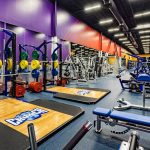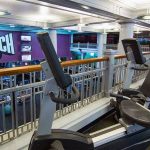Retailers played a waiting game with consumers in December and ended up having the best Holiday season in four years as a result. Thanks to tighter inventories, few retailers panicked and went into hyper markdown mode early as in seasons past.
The consumer finally showed its face the last week of the season as their hopes for the annual gutting of profits with reactionary 40% off sales never materialized.
The late surge drove sales — and potentially profits — higher than many had expected. Overall, about 75% of the chains tracked by Thomson Financial exceeded analysts' December forecasts.
In the end, even the media helped hype the “get it now or its gone” strategy even with out a “must have” item this year, finally pushing consumers off the sidelines and into the stores the final week of the season.
And the season may not actually be over just yet, as a record number of gift cards sold over the last two months are redeemed in January and retailers run through their normal season-end markdown process to clear the floor and re-set for spring.
According to ShopperTrak, a national retail data tracker, U.S. retail sales for December rose by 6.0% over December 2002. ShopperTrak said the December data signals that the 2003 holiday will be the most profitable for retailers since 1999, when sales rose 8.2%.
Redbook said December sales rose 3.3% compared with a year ago but were 1.0% below November sales.
Based on a report issued by the International Council of Shopping Centers that surveyed 77 chain stores, overall holiday comp store sales increased 4.0%, helped by Decembers 4.2% gain. The National Retail Federation had reiterated its forecast for 5.7% growth as recently as three weeks ago, but consumers held out until the last minute, robbing retailers of larger gains.
The increase was the markets best since 1999, when ICSC reported a 5.4% gain in same-store sales. Comparable store sales for the same period last year had gained just 0.5%.
As first suggested by Sports Executive Weekly in SEW_0349, the market favored the upscale retailers and the heavier discounters. The middle of the market showed mixed results.
The ICSC report said wholesale clubs led all retail categories with an 8.6% gain in sales. And Costco performed best in class with an 11% same-store sales increase for the month on top of a 3.0% gain last year.
On the specialty front, the holiday season appeared to be a bright one as the retailers in the sector that reported December or holiday numbers tended to outperform the average fro the overall market.
Hibbett Sporting Goods reported that net sales for the nine-week period ended January 3 increased 19.0% to $69.0 million compared with $58.0 million for the year-ago holiday period. Comparable store sales increased 6.7% for the period on top of a small 1.5% gain for the same period last year.
The company said that strong sales in apparel and footwear that were reported in Q3 continued into the holiday period. The company also saw “positive results” in team equipment.
On the left coast, Big 5 Sporting Goods saw net sales for their fourth quarter ended December 28 increase 8.5% to $191.8 million from $176.7 million in the same period last year. Same-store sales increased 3.6% for the quarter versus a meager 0.4% gain in Q4 last year.
The gain this year represents the 32nd consecutive quarter of same store sales increases and was the retailers strongest quarterly comp store sales gain in fiscal year 2003. The company said the comp gains were across the board, geographically and by category.
Up north, the Forzani Group Ltd. reported that total retail system sales for the holiday period ended December 28 increased 10.9% and comparable store retail system sales were up 6.5%. Corporate stores comp sales increased 2.0% while franchise comps jumped 18.1% for the Holiday selling season.
The company said that store margins were “especially strong” and “significantly above” last year due to efforts to exit casual clothing categories and avoiding heavier markdown activities.
Comparable corporate store inventories were down 10% in the period.
Pacific Sunwear is getting to sound like broken record with a double-digit comp store sales increase for the 13th month out of the last 15 months. The 12.0% same store sales increase in December was on top of a 16.1% same store sales increase in the year-ago period. The last two weeks of the month each comped up more than 20%.
PacSun same-store sales were up 11.9% and d.e.m.o. same store sales increased 12.7%. Guys comped up in mid single digits at PacSun while the Girls business comped up in the high single digit range. Footwear again saw comps greater than 20% and Accessories comps were up in the high teens. At d.e.m.o., same store for Girls were up 20%+, Accessories were up in high teens and Men's comps were up 3.0% fro the period.
Total sales for the five week December period were $187.5 million, a 22.6% increase over December last year. Internet sales for Pacsun.com increased 103% to $3.1 million for the period.
Gift card sales increased 38% for the period between Thanksgiving and Christmas and comparable store increase in gift card sales increased 28% during the same period.
Analysts estimated that overall gift card sales rose 30% and represented 10% of holiday sales at major U.S. chain stores.
Based on an estimate of a January same-store sales gain of 5.0% to 10%, PSUN is raising its guidance for fourth quarter earnings 41 cents per share, up from the previous 37 cents estimate for the quarter.
PSUN will now add 40 new d.e.m.o. stores in 2004, up from the previous plan for 30 stores, bringing the total new store count to 110 for the year.
The Buckle reported comp store sales increased 4.8% for December and total sales increased 9.3% to $73.0 million for the month.
Higher-end department stores fared better than the lower end in department stores as Neiman Marcus Group saw comps jump 14.8% and sales at Saks, Inc. rose 5.1%, helped by a 9.6% gain at its better Saks Fifth Avenue stores.
Conversely, Sears was one of the first to pull the ripcord, slashing prices two weeks before Christmas in an attempt to drive traffic, but still posting a 0.8% decline in same-store sales for the month. Kohl's said sales fell 1.2% in December and lowered its fourth-quarter profit forecast.
“We are very disappointed with our December sales performance,” said Kohl's Chief Executive Larry Montgomery in a release. “The business came very late in the month and at deeper discounts than we planned.”
As a result, Kohl's expects fourth-quarter profit of 68 cents a share to 70 cents a share versus analysts expectations of 88 cents and the 81 cents per share earned in Q4 last year.
Discounters showed a 4.1% increase while department stores posted an anemic 1.2% increase in for the month, beating only footwear and furniture stores.
Kurt Barnard, president of Retail Forecasting, pointed to the department stores' over-reliance on apparel.
“Fashion apparel is not uppermost on people's minds,” he said in a report. “The problem with most department stores, including Sears, may well be that there is a staggering sameness.”
Shoe Carnival may be indicative of the issues at footwear chains that rely on seasonal product sales to drive business in the fourth quarter. Warmer weather early in the season cut into boot sales and the retailer never recovered. Comp store sales decreased 3.8% for the period. Athletic comps were “flat”. Boots comps were down 9.0% for the month.
The company said a late surge in sales the last two weeks of the month was not enough to offset the 12% comp sales declines for the first three weeks of December. The last two weeks saw comps up 8.0% “with increased promotional advertising”. Consequently, merchandise margins were “below last years levels”.
SCVL said they will continue to be promotional to liquidate the boots inventory.
Based on the decline in quarter-to-date sales, Shoe Carnival is now cutting EPS estimates for the quarter to be in the one penny loss to two cents earnings per share range. SCVL sees flat comps in January.
SCVL did say they controlled inventories and expect to end the season with inventories in “good shape” and “well positioned” for spring. Overall inventory is down 3.5% on a per store basis.
Famous Footwear fared a bit better as same-store sales dipped 0.2% for the month of December. Total sales increased 2.2% to $111.9 million. Momentum also turned positive here the last two weeks of the month as the chain benefited from an increase in athletic sales, driven by fashion/retro athletics, and sales of women's dress shoes.
Brown Shoe, parent of the Famous Footwear chain, reiterated guidance for the fourth quarter and the year. Despite slower sales, margin dollars were substantially in line with expectations, protecting the bottom line. Full year EPS estimates stand at $2.75 per share.
On the online front, it was all grins and giggles from the etailers that have been building sales over the last four or five years with little success at turning a profit. Many hope that this is the season that will position the group for a profitable year ahead.
There is no doubt that much of the frustration many traditional retailers experienced during the first few weeks of December was due in part to consumers hitting the Internet for goods that could be delivered in time for Christmas.
According to the eSpending Report from Goldman, Sachs, online sales of consumer products jumped 35% to $18.5 billion during the 2003 holiday season. Goldman said online shoppers spent $3.8 billion on apparel this season, a 40% increase from 2002. A BizRate.com report Showed that total Holiday spending rose 23% for 2003 to just over $7.0 billion. In their annual research they said apparel spending increased 38% to $930 million and Sports & Outdoors products increased 23% to $190 million.
Overall, analysts came away from the month of December with an upbeat mood about January and the coming year.
A good holiday-shopping season tends to jump start the new year in terms of earnings and stocks, said ICSCs Niemira. He is projecting a 4.0% increase for full year 2004, a nice gain on top of the 3.2% increase expected for 2003. He also sees a 3.0% to 4.0% gain for January as consumers respond to improving economic trends and redeem gift cards received during the holidays. Due to SEC rules, retailers cannot book the gift card revenues until they are redeemed.
“The bottom line is that we had a good — but maybe not great — holiday season,” he said. “. . . Certainly this is a good omen for 2004.”















